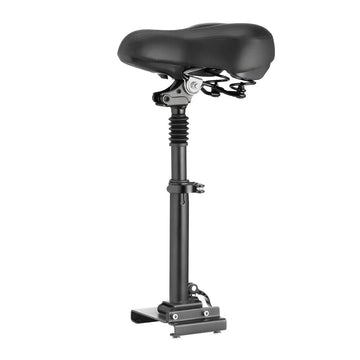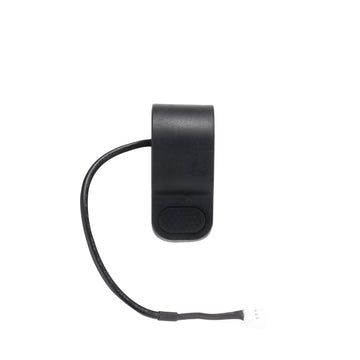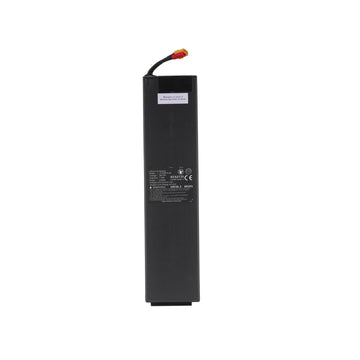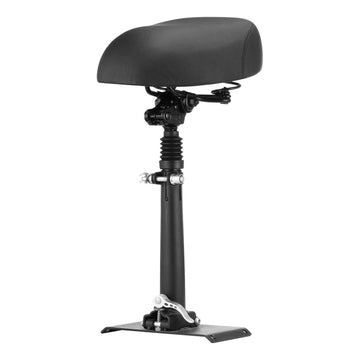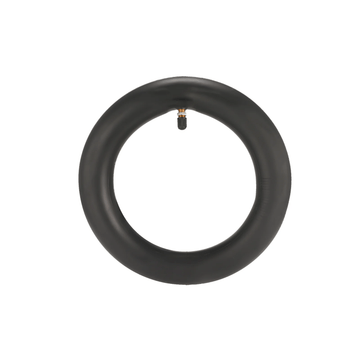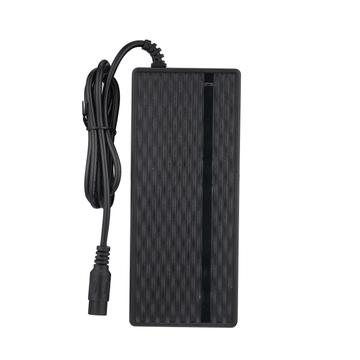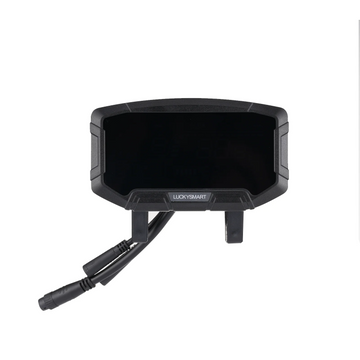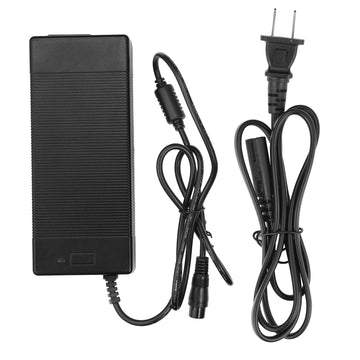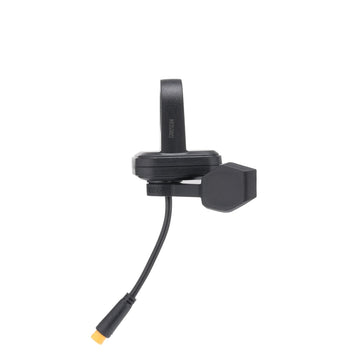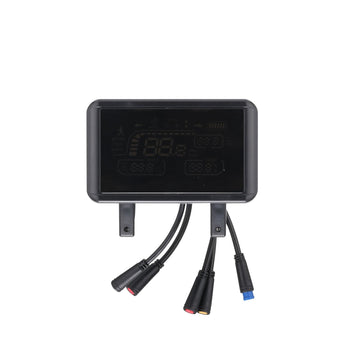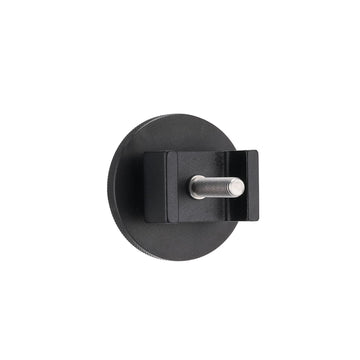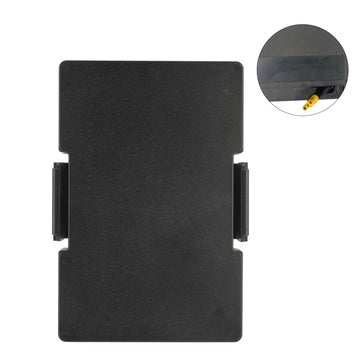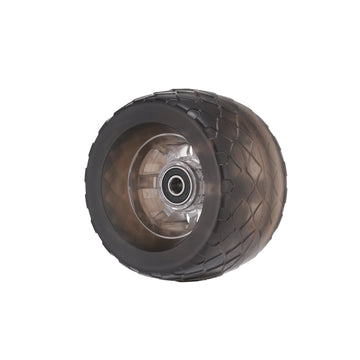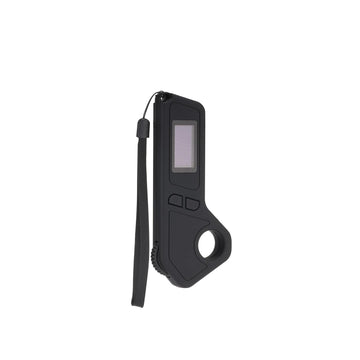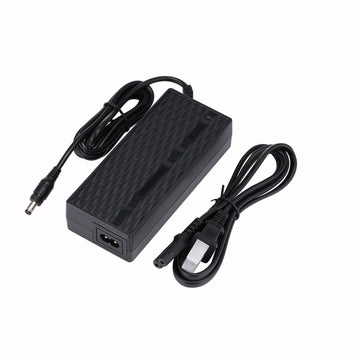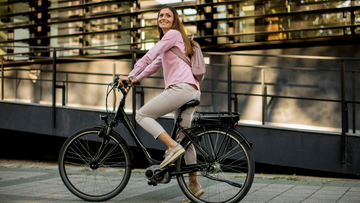
Trying to decide between an e-bike with pedal assist or throttle? You're not alone. This choice affects how you'll interact with your electric bike every time you ride.
Whether you're looking for exercise, easy transportation, or something in between, understanding the differences between these two power delivery systems is crucial for finding your perfect ride.
What Is Pedal Assist in E-bike?
Pedal assist is exactly what it sounds like - the motor helps while you pedal.
When you push on the pedals, sensors detect your movement and activate the motor to give you a boost.
Think of it as having a helpful friend giving you a push while you're still doing some of the work.
How Pedal Assist Systems Work
Pedal assist (also called pedelec) systems use sensors to detect when you're pedaling. Once you start pedaling, the motor kicks in to provide extra power. The bike's computer controls how much assistance you get based on your settings.
Most electric bikes with pedal assist offer multiple levels, letting you choose between light help for more exercise or strong assistance when you're tired.
Different Pedal Assist Levels
Most pedal assist e-bikes come with 3-5 assistance levels:
- Level 1 (Eco): Minimal assistance, maximum battery life
- Level 2-3 (Tour/Normal): Balanced assistance for everyday riding
- Level 4-5 (Sport/Turbo): Maximum assistance for hills and difficult terrain
Higher levels give more power but drain your battery faster. Many riders use a mix of levels, switching to higher assistance for hills and lower for flat sections to extend range.
Ready to experience the natural feel of pedal assist yourself? Check out Isinwheel's collection of electric bikes with advanced pedal assist systems!
Pedal Sensors vs Torque Sensors
Pedal assist systems use two main types of sensors:
- Cadence sensors detect if you're pedaling (on/off). These are common on budget e-bikes and provide assistance regardless of how hard you're pedaling.
- Torque sensors measure how much force you apply to the pedals. The harder you pedal, the more assistance you get. This creates a more natural, responsive feel that serious cyclists typically prefer.
Pedal assist systems reward your effort with power, making them perfect for riders who want exercise with assistance. Next, let's see how throttle systems compare with this approach.
How Throttle Systems Work on Electric Bikes
Throttle systems give you power on demand without pedaling. Similar to a motorcycle or scooter, you activate the motor with a simple control, and the bike moves forward even if your feet are completely still on the pedals.
Types of Throttles (Thumb, Twist, and Button)
There are three common throttle types on electric bikes:
- Thumb throttles are small levers you push with your thumb. They're popular because they're easy to use while maintaining a firm grip on the handlebars.
- Twist throttles work like motorcycle throttles - you twist the handlebar grip to activate power. These are intuitive for many riders but can cause accidental activation.
- Button throttles require a simple press to engage the motor. Some models have variable speeds based on how hard you press.
On-Demand Power: When and How Throttles Activate
With a throttle e-bike, power is available instantly whenever you want it. Press or twist the throttle, and the motor engages immediately. Most throttles are proportional, meaning the more you press, the more power you get. This gives you precise control over your speed without changing gears or pedaling harder.
Throttles are particularly useful in these situations:
- Starting from a complete stop
- Getting through intersections quickly
- Giving your legs a complete rest on long rides
- Helping riders with knee problems or limited mobility
Throttle Speed Limits and Regulations
Most throttle-controlled e-bikes in the U.S. are limited to 20 mph (32 km/h) under the commonly adopted classification system, though specific speed limits can vary by state and local jurisdiction.
Once you reach the maximum legal speed, the motor stops providing additional power even if you continue pressing the throttle. Some electric bikes have speed limiters that can be adjusted or removed, but doing so may change the legal classification of your bike and restrict where you can legally ride.
Throttle systems provide the easiest riding experience with minimal physical effort. Now let's compare how these two systems stack up against each other in real-world use.
Want instant power without pedaling on your commute? Explore our men's electric scooters with responsive throttle control!
Key Differences Between E-bike Pedal Assist and Throttle
The pedal assist vs throttle debate comes down to how you want to interact with your e-bike. Each system creates a distinctly different riding experience that affects everything from battery life to the exercise you get.
Pedal Assist vs Throttle Comparison
|
Power Delivery |
Pedal Assist |
Throttle |
|
Gradual boost while pedaling |
Immediate power on demand |
|
|
Battery Efficiency |
20-30% better range |
Faster battery drain |
|
Physical Effort |
Always requires pedaling |
Can be used without effort |
|
Riding Experience |
Enhanced cycling feel |
Similar to scooter/moped |
|
Activation Method |
Engages when pedaling |
Button/lever press |
|
Control |
Natural, bicycle-like |
Motorized vehicle feel |
|
Exercise Benefit |
Maintains cardiovascular workout |
Minimal when not pedaling |
Understanding these key differences helps determine which system fits your riding style best. Next, let's look at how laws treat these different e-bike types.
Not sure which system is right for you? We can help! Browse our complete guide to understanding e-bikes and their power systems.
Legal Considerations for Pedal Assist and Throttle E-bikes
The way your electric bike delivers power affects where you can legally ride it. Different countries and even states have varying rules about throttle and pedal assist systems.
Classification of E-bikes (Class 1, 2, and 3)
In the United States, e-bikes typically fall into three classes:
- Class 1: Pedal assist only (no throttle), max speed of 20 mph
- Class 2: Pedal assist and throttle, max speed of 20 mph
- Class 3: Pedal assist only (no throttle), max speed of 28 mph
Trail Access and Street Legal Status
Class 1 pedal assist bikes have the broadest access:
- Most bike paths and lanes
- Many mountain biking trails
- State and national parks (policies vary)
Class 2 throttle bikes face more restrictions:
- Limited access to certain nature trails
- Some cities restrict them from certain bike lanes
- Less acceptance in mountain biking communities
Class 3 bikes (faster pedal assist) have mixed access:
- Generally allowed on roads
- Often restricted from bike paths
- Usually prohibited on mountain bike trails
International and State Regulations for Different Systems
Regulations vary widely around the world and continue to evolve:
- European Union: Generally restricts e-bikes to pedal assist only (no throttle), with a maximum assistance speed of 25 km/h (15.5 mph)
- Australia: Rules vary by state, but many areas restrict throttle systems
- Canada: Federal regulations allow both systems with varying provincial restrictions
Even within the United States, state laws can override the three-class system. Always check current local regulations before purchasing and riding.
Understanding these legal frameworks helps ensure you can ride where you want. Now let's explore the specific benefits of pedal assist systems.
Need something that follows regulations while maximizing your riding possibilities Discover our collection of safe, street-legal electric scooters!
Benefits of Pedal Assist Systems on E-bikes
Pedal assist technology has become the dominant system in the e-bike market for good reasons. It offers several advantages that appeal to both traditional cyclists and newcomers to biking.
- Extended Battery Range: Pedal assist systems typically provide significantly better range than throttle-only riding, often 40-70 miles on a charge compared to 20-35 miles with throttle only.
- Health and Fitness Advantages: Pedal assist keeps you actively engaged with cardiovascular benefits, joint-friendly exercise, and more calories burned compared to throttle-only riding.
- Natural Riding Feel: For anyone who has ridden a bicycle before, pedal assist feels intuitive, with better handling on technical terrain and more predictable behavior in traffic.
Want to learn more about how pedal assist can transform your rides? Read our complete guide to pedal assist e-bikes!
Advantages of Throttle Control
- Getting Started from a Stop: Throttles eliminate the challenge of starting from a complete stop, especially on hills or when carrying cargo, with no need to find the right gear before starting.
- Accessibility Benefits: Throttle systems have made cycling accessible to people with knee or joint problems, certain disabilities, and older riders who might otherwise be unable to ride.
- Handling Difficult Terrain: Throttles provide immediate power for navigating through sand or mud, powering up extremely steep hills, or maintaining balance at very slow speeds.
Choosing Between Pedal Assist and Throttle for Your Riding Style
Commuting Considerations
- Pedal assist works well for commuters wanting exercise, maximum range, and a natural cycling experience.
- Throttle systems benefit commuters dealing with frequent stops, carrying loads, or wanting to arrive without sweating.
Off-Road and Mountain Biking
For trail riding, pedal assist offers better weight distribution and handling on technical terrain. Throttles provide instant power for clearing obstacles and less exhaustion on steep climbs.
Long-Distance Touring
For touring, pedal assist offers better range with strategic use of assistance levels. Throttle systems require more frequent charging stops and careful power management.
Looking for affordable electric options for your commute? Browse our collection of affordable electric scooters featuring the latest throttle technology!
Dual-System E-bikes: Getting the Best of Both Worlds
Many modern electric bikes come equipped with both systems, sharing the same motor and battery, though it's important to note that some models may not allow simultaneous use of both power systems:
Efficient use of pedal assist for:
- Regular cruising on flat terrain
- When maximum range is needed
Strategic throttle usage for:
- Starting from stops
- Very steep hills
- Temporary rest periods
- Quick acceleration
Matching Your System to Your Riding Goals
Choose pedal assist if you want:
- A workout with electrical assistance
- Maximum range per battery charge
- A natural cycling experience
- Access to more trails and bike paths
Choose throttle if you need:
- Minimal physical exertion
- Help with mobility limitations
- Easiest possible starts and stops
-
The ability to ride without pedaling
Consider a dual-system if your needs vary or you're unsure which you'll prefer.
Conclusion
Pedal assist and throttle systems offer different riding experiences to suit various preferences.
The right choice depends on your personal riding preferences, physical needs, and the types of terrain you'll be navigating.
Both systems have their place in the electric bike ecosystem, and many riders find that having access to both provides the most versatility.
Discover more about pedal assist technology in our comprehensive guide to pedal assist e-bikes.
Frequently Asked Questions
Is pedal assist or throttle better for e-bikes?
Neither system is universally better as each serves different needs. Pedal assist offers a more natural riding experience with better range and exercise benefits. Throttle systems provide easier starts, rest periods, and better accessibility for riders with physical limitations or those who prefer minimal exertion.
Can throttle e-bikes go uphill?
Yes, throttle e-bikes can climb hills effectively without pedaling in most cases. The steepness they can handle depends on the motor power, battery voltage, and the bike's gearing. Most e-bikes with 500W or higher motors can climb moderate hills using only the throttle, though very steep inclines may require some pedaling assistance.
Is pedal assist enough for steep hills?
For most riders, pedal assist is sufficient for steep hills when using higher assistance levels. The combination of human power and motor assistance creates an effective system for climbing. Bikes with torque sensors perform especially well on hills as they increase power in proportion to your effort, making climbs feel more manageable.
Do you have to pedal an e-bike with pedal assist?
Yes, pedal assist systems only work when you're actively pedaling – that's their defining characteristic. The motor provides assistance that multiplies your effort, but you must pedal to activate the system. If you want the option to ride without pedaling, you'll need an e-bike with a throttle or a dual-system model that incorporates both features.
Are throttle e-bikes legal everywhere?
No, throttle e-bikes face more restrictions than pedal assist models in many jurisdictions. Many European countries prohibit throttles or severely restrict their use on e-bikes. In the U.S., while Class 2 throttle e-bikes are generally legal on roads, they may be restricted on certain trails, bike paths, and in some municipalities. Always check current local regulations before purchasing.
























